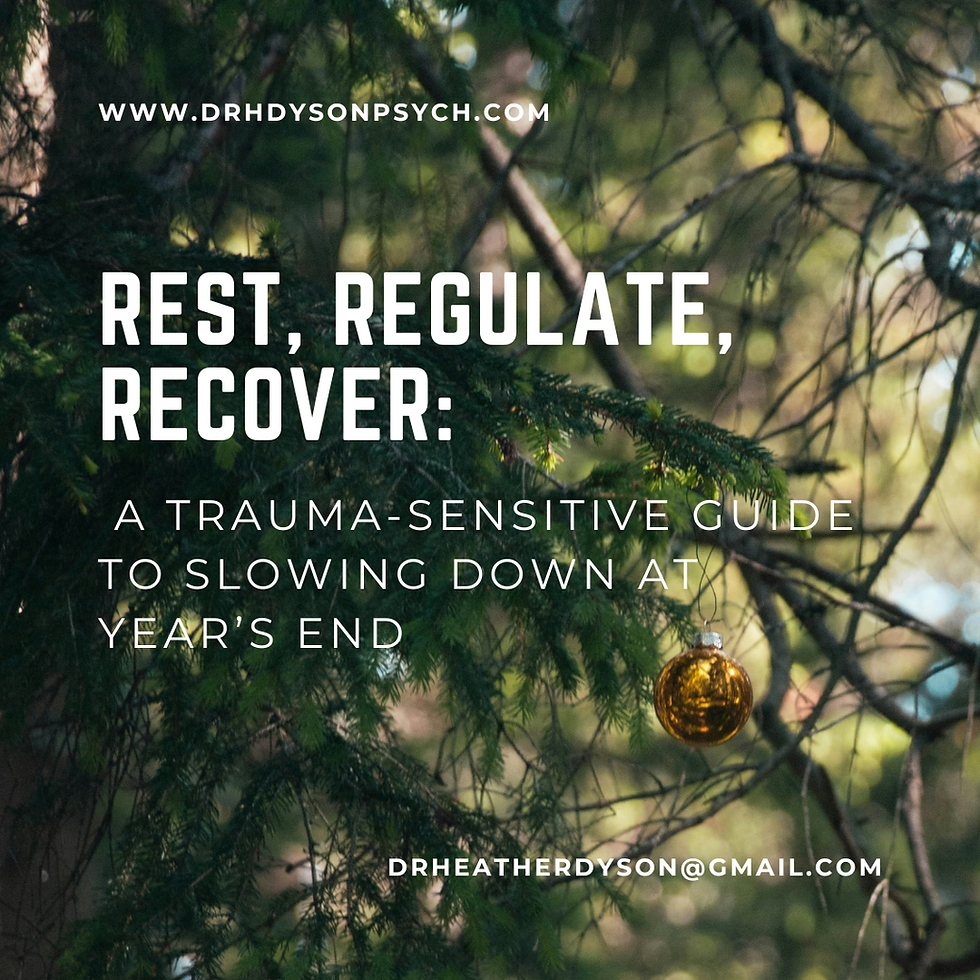What is Compassion Focused Therapy?
- Dr Heather Dyson

- Mar 15, 2021
- 3 min read
What is Compassion Focused Therapy (CFT?)
Compassion Focused Therapy (CFT) is a third wave cognitive model which was originally developed to treat shame, self-loathing, and self-attack. It can be helpful when working with conditions such as depression, anxiety, and PTSD / trauma. CFT’s epistemological assumptions include that belief that humans are shaped not only by our lived experiences (science of human nature and attachment experiences) but also by our biological urges to survive (evolution).

Evolution of the brain
CFT understands that our brains are the product of a millennia of evolution and that this means that we live with the legacy of brains which were not designed for modern day society. Consequently, there are parts of our brain which are not interested in our fundamental happiness and wellbeing but are much more interested in ensuring that we stay alive. In other words, different parts of our brain will have different motivations, abilities, and interest, and sometimes this means that they don’t always get along.
The model breaks down the our brain into three systems, from the least evolved (but most powerful) to the most evolved (but least powerful).
The “reptilian” brain is the oldest and most powerful part of our brain. It’s focus is on keeping us alive. It is our threat system and it is excellent at it’s job.
The “mammalian brain” is our next evolution. It’s concerned with us living in groups, hierarchy and caring. Whilst “weaker” than the reptilian brain, it is the only part of the brain that can switch off the threat system. Consequently, it is also known as our attachment system.
The “human” brain is the most recently evolved and consequently the least powerful. It’s the amazing part of our brain that means that we’ve found cures for cancers, can create art, consider philosophical questions about ourselves. It is also known as our Drive system, helping us to attain goals, remain focused and achieve. However, as mentioned previously, it is a very weak part of our brain. That means, when our reptilian-flight-flight brain switches on, all of our ability to rationally think and act gets switched off.
The CFT model
CFT argues that the three systems (Threat, Attachment, & Drive) manage our emotional states. However, each of these systems will be shaped by our environmental experiences. For example, As children, when we fell over and hurt our knees, our threat system would be activated, we burst into tears and seek out care (attachment system) from a parent/care-giver. Once the threat system has calmed down, the adult may then help us to think about what we were doing and help us to problem solve around the situation. In this way, all three systems remain in balance and work harmoniously.
Unfortunately, some individuals do now experience those supportive and caring interactions through their childhood. This can mean that their threat system becomes overly powerful and their attachment system increasingly week. This is particularly problematic as the only system which can switch off the threat system is the attachment system. This can result in adults who main strategies for coping in life are through aggression (fight), avoiding/disengaging (flight), or, in extreme cases, dissociating (faint)
How does CFT work with trauma?
The aim of CFT is to strengthen the attachment/care-giving system, thereby alleviating suffering. Treatment includes learning about human nature, learning skills to develop the attachment system, and practicing activating this system in your everyday life.
I have utilised this therapeutic model with clients who have experienced various types of interpersonal trauma. When individuals have experienced extensive trauma, their threat systems can become so sensitised to threat that even benign experiences and events can be felt as dangerous. CFT can help clients to recognise that their current coping strategies of avoidance, aggression, and cutting off emotionally, are actually unintentionally resulting in increased feelings of anxiety and distressed. By helping them to increase their own self-compassion, by taking a non-judgement and empathic stance, we can start to strengthen their attachment system and ultimately turn off the threat system.
If you would like to know more about CFT or feel that you would like support with your mental health, please get in touch: drheatherdyson@gmail.com.
#MH #mentalhealth #compassionfocusedtherapy #cft #therapy #therapist #psychologist #psychology #trauma
Photo by Matt Collamer on Unsplash




Comments